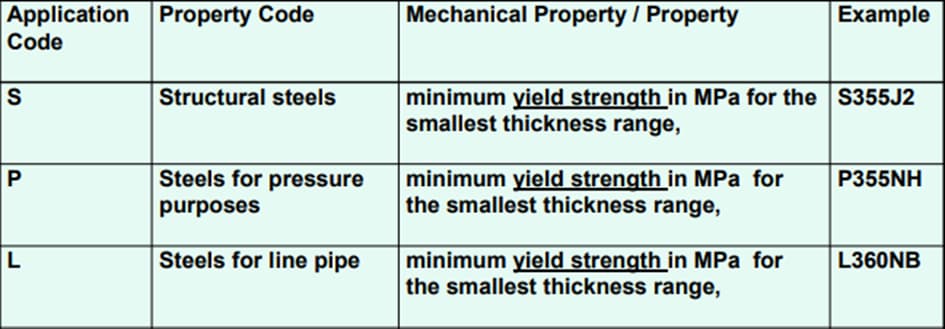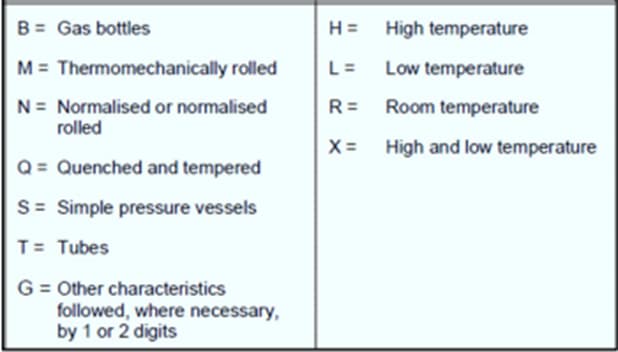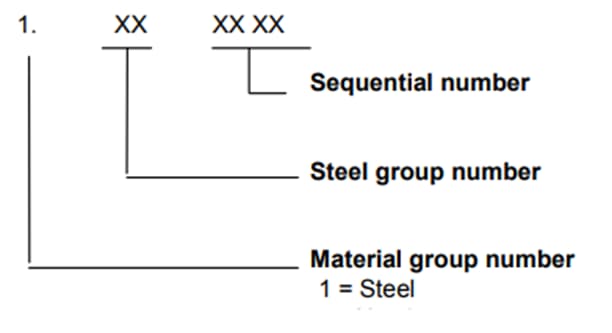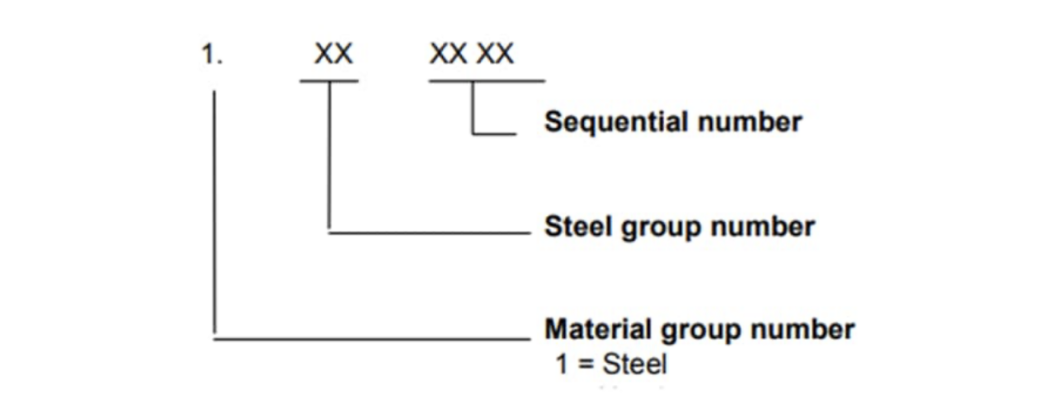The establishment of the EEC (European Economic Community) necessitated the creation of common standards called “European Standards” (EN), thus unifying the common language across Europe. Since 1988, a new set of European standards (ENs) have been created in 18 countries in Western Europe to replace national standards such as BS, DIN, SS, and NF.
The main reason for standardizing steel is to provide a common language between steel products manufacturers and their customers.
Steel standards are used in many projects around the world to determine steel quality, strength, and properties. The European Committee for Standardization (CEN) is officially recognized by the European Union as a European standardization body. For example, EN 10027 Standard designation system.
Since 1988, a new set of European standards (ENs) have been created in 18 countries in Western Europe to replace national standards such as BS, DIN, SS, and NF. Despite being accepted and used effectively in all European countries, many documents often contain outdated national systems such as German DIN, British BS, French AFNOR, and Italian UNI.
Another important fact is that European standards often become international standards. Due to the close relationship between CEN and the International Organization for Standardization (ISO), CEN standards are quickly followed as ISO standards and are increasingly used around the world.
The EN standards cover a wide range of materials including plates, sheets, and strips, hot and cold rolled carbon and alloy steels, spring steels, electrical steels, heat-treatable steels, castings, stainless and heat-resisting steels, etc.
EN 10027 Standard Designation System for Steels
Category 1: Steels designated according to their application and mechanical or physical properties
This European Standard (EN 10027) specifies rules for designating steels using symbolic letters and numbers to express application and principal characteristics, e.g. mechanical, physical, chemical, to provide an abbreviated identification of steels.
First of all, naming begins with a letter that represents steels usage purpose. For example, if steel is specified as cast steel, its name must be preceded by the letter G. Then, the properties gained with the production aspects, the desired properties, coating, and heat treatment are specified respectively.

In order to avoid ambiguity, it may be necessary to supplement these principal symbols by additional symbols identifying additional characteristics of the steel or steel product, e.g. suitability for use at high or low temperatures, surface condition, treatment condition, deoxidation. For example, additional Symbols for Pressure Purpose Steels are given below.
Unless otherwise specified in this EN 10027 standard, the symbols used in the steel name shall be written without spaces.

Category 2: Steels designated according to their chemical composition
In order to keep the steel names of alloy steels as short as practical regarding EN 10027, some digits or symbols may be omitted as long as there is no risk of confusion with a similar grade.
- Non-alloy steels, average Mn < 1 % (excluding free cut steels);
Such steels are coded in the following order:
• C defines plain carbon steels,
• The number after C represents a multiple of the average Carbon ratio (100x),
• The letters after the carbon ratio show the properties of the steel.
- Non-alloy steels with an average manganese content ≥1%, non-alloy free cutting steels with an average alloy element content (by mass) <5% and alloy steels (other than high speed steels)
For coding in this group, the following steps are applied respectively:
• Steel castings are indicated by «G».
• 100 times the carbon ratio
• Alloying elements characterizing steel:
• Alloy element ratios are separated from each other by dashes. Average rates are multiplied by the following coefficients.
Alloy element: Cr, Ni, Mn, Si, Co, W multiplied by 4; Al, Be, Cu, Mo, Nb, Pb, Ta, Ti, V, Zr multiplied by 10; Ce, N, P, S, multiplied by 100; B multiplied by 1000.
Example:
11MoCrV7-2-4 (Material number: 1.7716)
11 – 100 times the carbon content, 0.11% C
MoCrV7-2-4 Average 0.7 % Mo; 0.5% Cr; 0.4% V
- Stainless steels and other alloy steels (other than high speed steels) with an average content (by mass) of at least one alloying element ≥5% (Formerly high alloy steels)
Example:
GX15CrNiCo21-20-20 (Material number: 1.4957)
G: Pouring condition
X: High alloy case
15: 100 times the average carbon ratio, 0.15% C
CrNiCo21-20-20 Average 21% Cr; 20% Ni; 20% Co
EN 10027-2: Steel Numbers
The numbering of the steels is also made following the EN 10027-2 standard. This European Standard sets out a numbering system, referred to as steel numbers, for the designation of steel grades. EN 10027-2 deals with the structure of steel numbers and the organization for their registration, allocation, and dissemination.

The numbering of steels is done according to EN 10027 basically as follows.
- XXYY(ZZ)
1: Indicates that the material type is steel.
XX: Steel group in the table. In Tables in the range of 00 – 99, the steels are divided into different groups.
YY: Details of steels separated according to XX group. The numbers are given in Tables in EN 10027-2 in the range of 00 – 99.
ZZ: No new symbol is given after 4 symbols (XXYY). However, it can be given if it is necessary to express the production method features.
Example: Previously St 37-2, now S235JR, Material number: 1.0037
Former National Standards Replaced by EN standards
Although EN 10027 maintains its importance, an increasing number of national European standards are being withdrawn and replaced by EN standards. This transition, from old to new standards, has made it increasingly more difficult to compare the replaced national standards with current standards from other nations outside of Europe and the UK, let alone comparing them to the new EN standards.
Replaced national standards may be replaced by more than one new EN standard and some may have been partially replaced. So, a replaced national standard could be replaced by 2, 3, 4, or newer EN standards, or it may be only partially replaced by these new EN standards.
CEN Current Steel Standards other than EN 10027
Some examples of steel standards used by Yena Engineering are given below.
EN 1090-1: Execution of steel structures and aluminum structures – Part 1: Requirements for conformity assessment of structural components.
EN 10216: Seamless steel tubes for pressure purposes-Technical delivery conditions-Part 1: Non-alloy steel tubes with specified room temperature properties.
EN 10217: Welded steel tubes for pressure purposes-Technical delivery conditions-Part 2: Electrically welded non-alloy and alloy steel tubes with specified elevated temperature properties.
EN 3834-2: Quality requirements for fusion welding of metallic materials – Part 2: Comprehensive quality requirements.
EN 13445: Unfired pressure vessels – Part 1: General.
EN 15590-1: Petroleum and natural gas industries — Induction bends, fittings, and flanges for pipeline transportation systems — Part 1: Induction bends.
EN 10204: Metallic products – Types of inspection documents.
EN 9606: Qualification testing of welders – Fusion welding – Part 1: Steels.
EN 10253-2: Butt-welding pipe fittings – Part 2: Non-alloy and ferritic alloy steels with specific inspection requirements.
EN 1092-1: Flanges and their joints – Circular flanges for pipes, valves, fittings, and accessories, PN designated – Part 1: Steel flanges.
EN 10224: Non-alloy steel tubes and fittings for the conveyance of water and other aqueous liquids.
Other article you may interest :
Brief Comparison of Steel Standards


